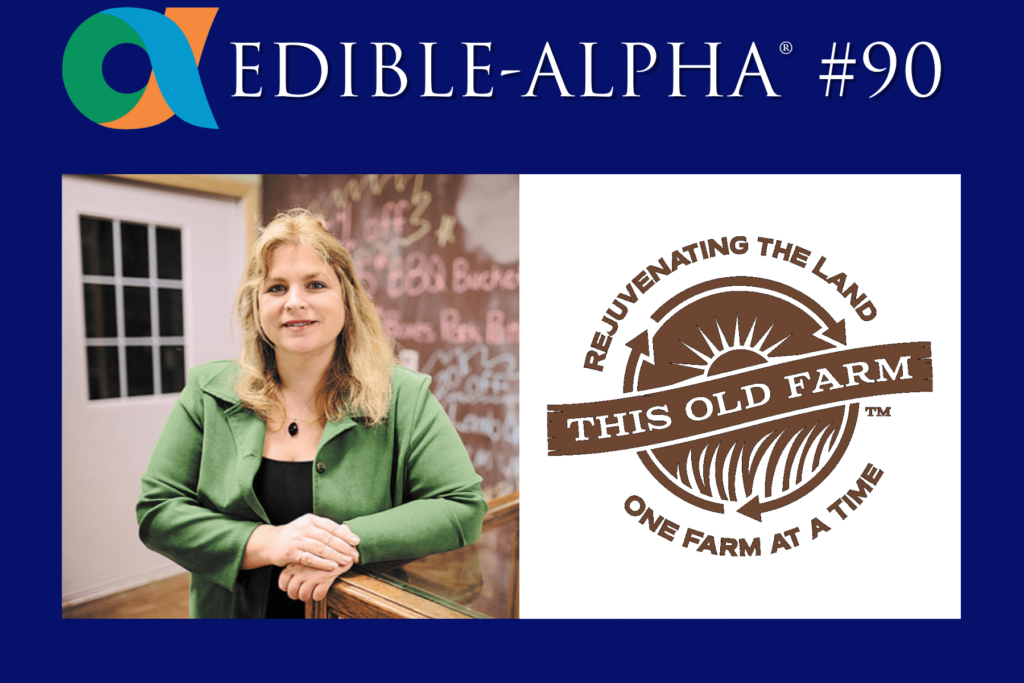Subscribe: Apple Podcasts | Spotify | Amazon Music | iHeartRadio | RSS | More
In Edible-Alpha® podcast #90, Tera interviews This Old Farm founder Jessica Roosa, who has spent the last 11 years scaling a small USDA-inspected meat processing facility and local food hub in Colfax, Indiana. They discuss the complexities, costs and rewards of entering this business, offering important insights for food and ag entrepreneurs eying the in-demand meat processing space.
Jessica started organic farming some 20 years ago, committed to raising sheep and poultry responsibly. Frustrated with the meat processing options available, she decided to start her own processing business, one that would ensure full traceability to enable product-label claims such as grass-fed and USDA Organic. Funded by a value-added producer grant, Jessica conducted a feasibility study to determine whether to build new onsite or purchase an existing facility nearby. The latter option proved much more economical, and soon she acquired an old custom-exempt facility for $150,000, investing another $100,000 to get it up and running.
Then in December 2010, with her new business barely off the ground, the facility burned down. Devastated but undeterred, Jessica built a better facility in its place, one she could take under USDA inspection to allow This Old Farm to ship across state lines. Although she’d loved to have erected a bigger building to expand capacity, she stuck close to the original facility’s footprint in order to be operational by that July when the processing business ramps up. This Old Farm would need to capture this revenue in 2011, to ensure her young venture would not go kaput.
After recounting the business’s beginnings, Jessica and Tera discussed the current state of meat processing in the U.S. There are major gaps in availability and efficiency, with farmers driving an average of 400 miles to access processing. There are niche processors and big industrial processors, but not much in the middle. The business’s seasonality adds complexities too, as does the dearth of skilled labor.
This Old Farm employs about 40 people, most of them full-time, for the slaughter, processing and value-added sides of the business. Guaranteeing 100% traceability requires a lot of effort and decreases efficiency, which is why most processors don’t do it. But this service assures farmers that the products they’re getting back, whether steaks, hamburger or sausage, come from their animals—a big marketing advantage.
Currently, This Old Farm is expanding capacity, with three different buildouts in the works. Jessica is holding off on one of those projects until she can be certain she’ll have the customer base to support it. The company is also opening an urban butcher shop in West Lafayette this summer.
Finally, Tera and Jessica talk financing. Meat processing is costly to break into, especially for newcomers who don’t have generational assets. Back when Jessica started, it would’ve cost her $1 million or more to build a facility on-farm—and that was without beef processing—which is why she bought the old facility. Along with her VAPG, she received funding from a small business innovation and research grant, a local food promotion program and a $300,000 bank loan. Now she’s weighing what types of investment vehicles to pursue for future scaling.

